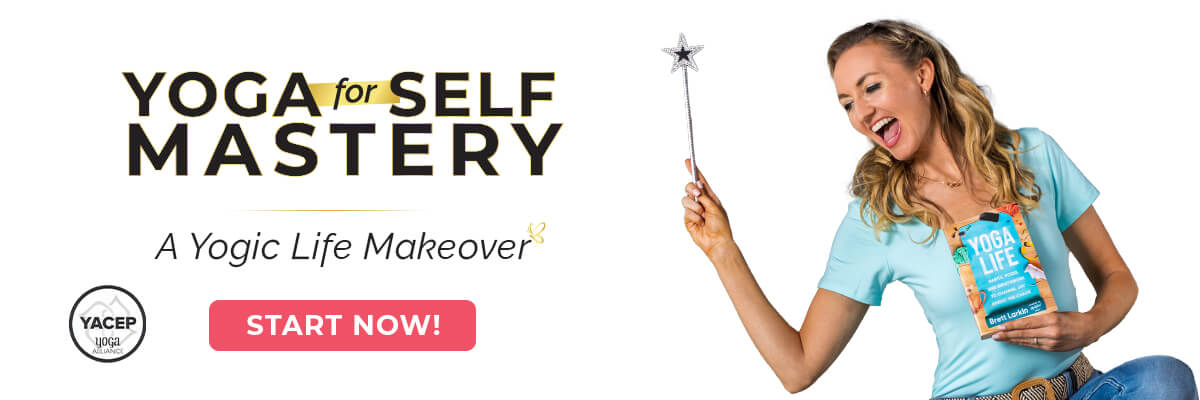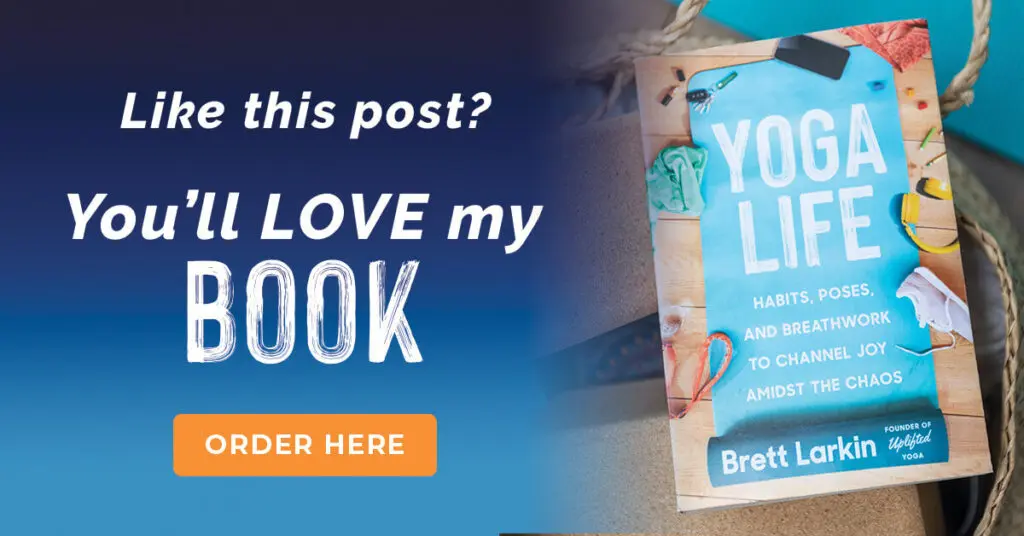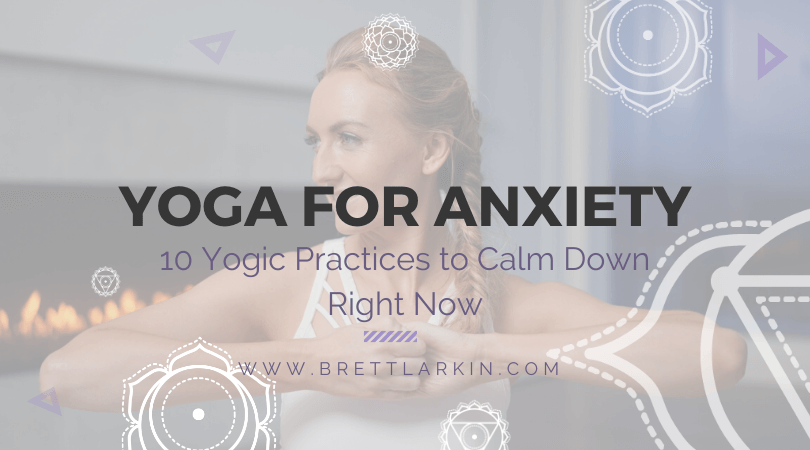
We have all felt it at some point in our lives…
…the physical and mental anxiety symptoms, like increased heart rate, shortness of breath, uneasy stomach, muscular tension, extreme waves of emotions, sudden panic or an overwhelming fear or worry of the unknown.
Experiencing these emotions and feelings is a natural human response. Life is full of ups and downs, highs and lows and occasional stress and anxiety are a normal part of the ebb and flow of our modern-day lives.
But for some of us, feelings of stress and anxiety become a chronic, daily struggle affecting our relationships, jobs, self-worth and overall health and well being. If you are reading this and struggle with chronic anxiety, please know that you are not alone.
According to the World Health Organization, anxiety disorders are the most common mental disorders worldwide and the number of people prone to stress, tension and anxiety continue to rise.
Not only that, but also women are more likely to experience anxiety than men.
Needless to say, it’s a major force to be reckoned with and yoga can help.
What Is Anxiety?
Anxiety is a term that includes a broad range of symptoms and mental health issues. While the word ‘disorder’ gets thrown around a lot, it really comes down to basic emotional responses in the body and the brain.
You see, the body has developed certain techniques for survival. Where humans were once meant to roam the earth with the animals, the brain and the body developed coping mechanisms to survive Mother Nature and all of its risky elements.
This is where flight-or-fight mode comes from and is why it is so difficult for many of us to override.
The flight-or-fight mode is a survival mechanism that helps energize our bodies enough to quickly escape danger and survive whatever threatening circumstance we find ourselves in.
This mechanism largely relies on our sympathetic nervous system to trigger, which increases our heart rate, causes the pupils to dilate, increases blood pressure so that our muscles can receive enough oxygen to perform, and induces a fast-paced breath.
While all of those things are absolutely amazing for survival, they can feel a bit out of place when they come on during our day-to-day activities.
What Causes Anxiety?
Anxiety, as we define it in our modern-day, comes on when our fight-or-flight mode is triggered. It comes on when we experience perceived stress and find ourselves in a situation that feels threatening.
The problem is not the anxiety symptoms so much as the perceived stress.
While we live in a modern world, our brains and our bodies mostly live in the Stone Age, where perceived stress was a threat to our survival.
Now, our brains have a hard time differentiating between real threats to our survival and just really annoying things, like traffic.
Because of this, our sympathetic nervous system often jumps into survival mode even when it isn’t necessary. And if we don’t use all the excess adrenaline and blood pressure released in this stress response, then we find ourselves in a dizzying swarm of anxious thoughts and other physical symptoms associated with anxiety.
The problem, though, is that we cannot undo these evolutionary mechanisms.
We can, however, learn certain techniques to mitigate these physical symptoms and bring our anxiety and depression down a notch. In fact, a whole new kind of yoga called Trauma-Informed Yoga is meant to help with this in victims of trauma. This is where yogic practices can prove to be incredibly helpful in regulating our stress response.
You may also like: Yoga For Migraines: 7 Yoga Poses That Will Reduce Tension
10 Yogic Practices to Reduce Anxiety, Panic, and Depression
With so many across the globe struggling with anxiety disorders, health care providers are turning to natural remedies and stress management practices like yoga for self-regulating and overcoming anxiety in addition to traditional, clinical treatments and therapy.
So which yoga practices are the most effective in reducing anxiety symptoms and stimulating a calm, clear mind?
Here are my top 10 Yogic Practices to reduce anxiety and support the overall health of your body, mind and spirit.
#1 Restorative Yoga Asana
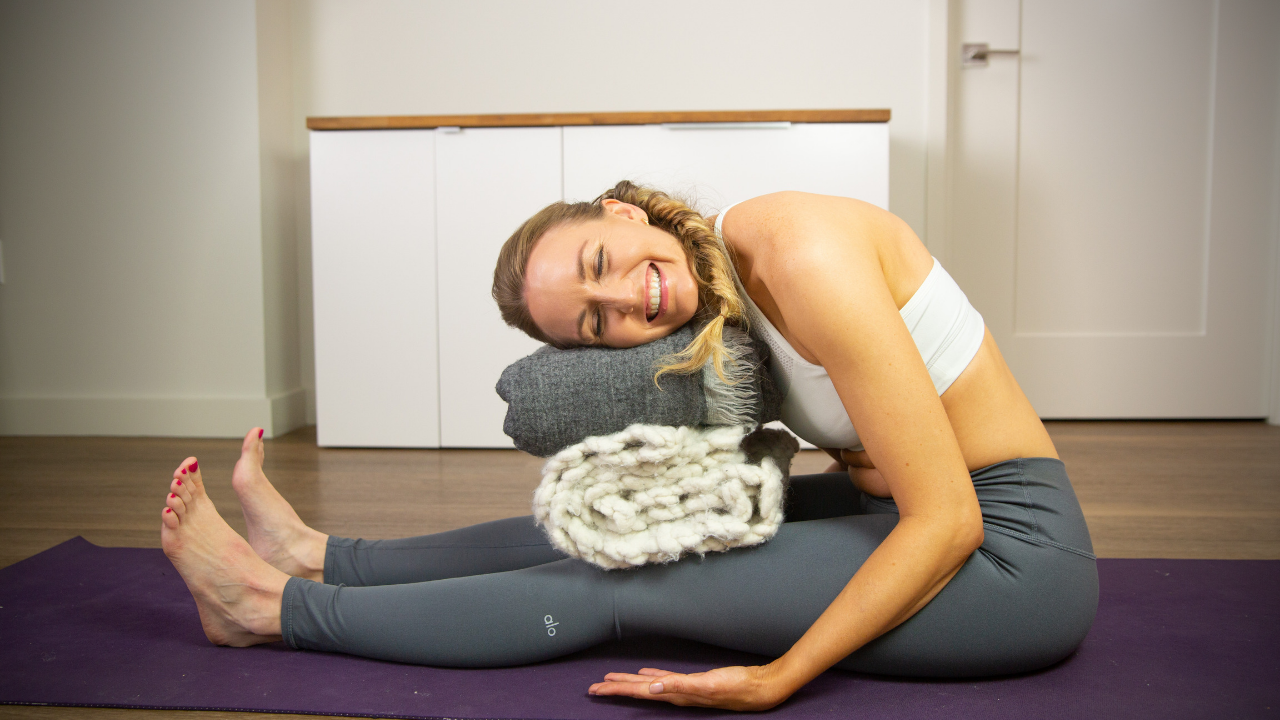
If you have ever tried yoga, you are already familiar with one of the most relaxing, stress-relieving yoga postures, Savasana. Savasana is the final, resting pose in most traditional yoga classes. It is practiced lying on your back making it accessible to most people.
Savasana is a restorative yoga posture because while in the pose, you are completely supported, allowing the body to relax and release tension. When the body is relaxed and at ease, the mind is relaxed and at ease, this is the mind-body connection that yoga helps us to realize.
Restorative yoga also stimulates the relaxation response which in turn switches “off” the stress response, decreasing physiological arousal leading to a reduced heart rate, lower blood pressure and ease of breath. The relaxation response also stimulates the parasympathetic nervous system, our rest and digest function, reducing cortisol levels (the stress hormone) and aiding in weight loss.
Many traditional yoga poses can become restorative through the use of props to ensure the body is fully supported and comfortable allowing you to remain in the pose for 3-5 minutes or more.
Grab some bolsters, pillows, blankets and blocks and try these deeply relaxing restorative yoga postures to ease and reduce stress and anxiety. Make yourself as comfortable as possible and remain in the poses for 3-5 minutes (or more if you have the time).
Best Restorative Yoga Poses For Anxiety
- Child’s Pose (Balasana)
- Supported Bridge Pose (Setubhandasana)
- Legs up the Wall (Viparita Karani)
- Corpse Pose (Savasana)
#2 Yoga Nidra
Yoga Nidra is a guided, resting meditation done while lying comfortably in Savasana. This practice offers an opportunity to deeply connect with yourself, explore what you need in the moment and release long-held emotions. It has been said that 1 hour of Yoga Nidra is the equivalent of 4 hours of deep, restful sleep.
Some yoga Nidra practices offer body scans and guided progressive muscle relaxation to help us become aware of the difference between tension and relaxation. This yoga practice shows us how physical tension caused by anxiety and stress feels when it manifests within the body and the ease that results in letting it go.
To practice this style of yoga at home, try an online yoga class that uses the relaxation technique practice in yoga nidra. I also have a yoga nidra script for you to try for yourself at home on your yoga mat.
#3 Pranayama
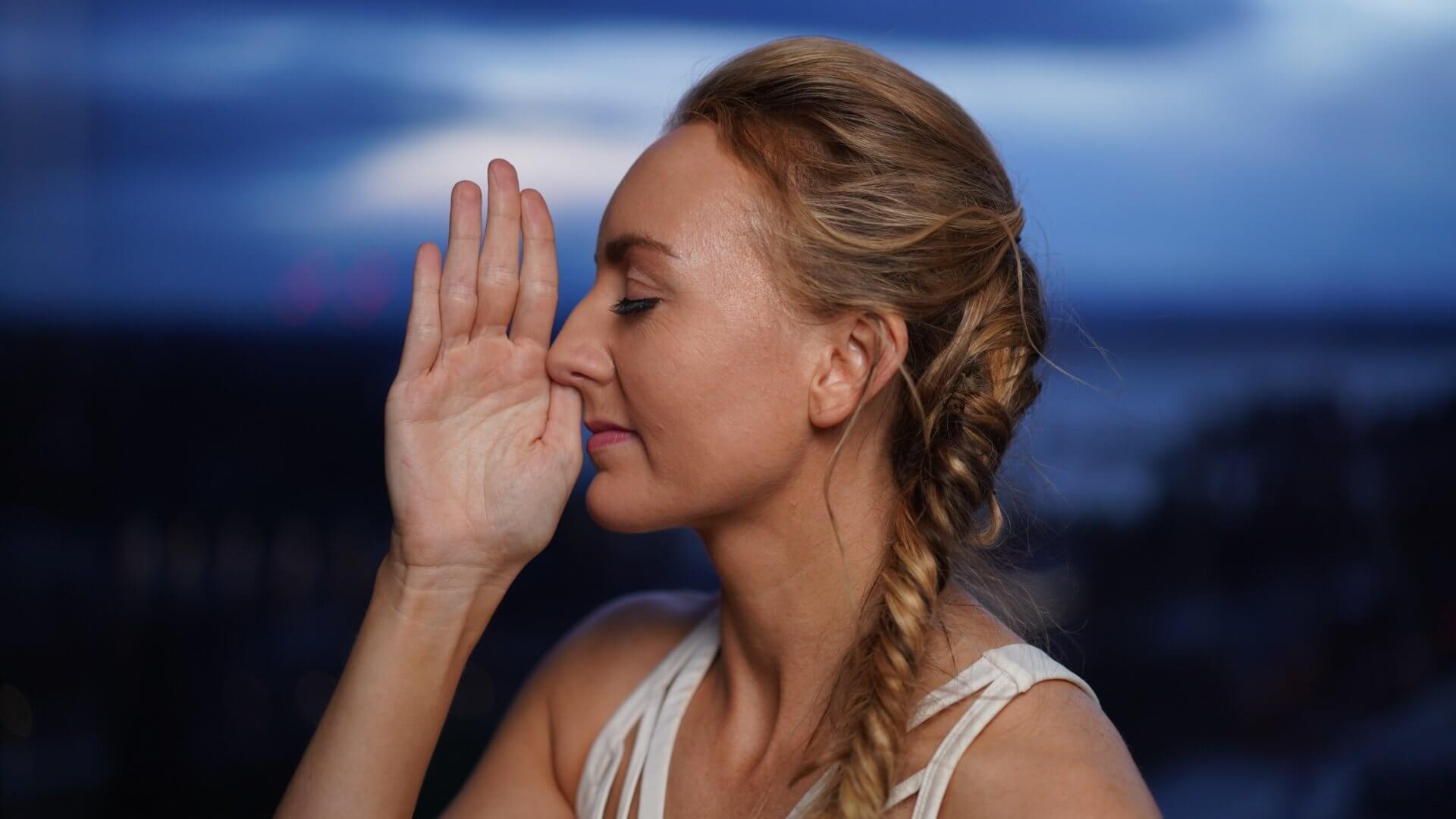
Never underestimate the healing power of a full complete breath! When we are anxious or stressed, our breath settles into our chest, creating fast shallow breaths, or “stressed breath”. Pranayama (breathwork) is a powerful practice that we can use to almost instantly reduce anxiety, release tension and calm our minds.
It works by affecting the vagus nerve, which carries information from the rest of the body to the brain. When we practice deep breathing, as is the case with certain pranayama breathing techniques, we manually reset the vagus nerve and interrupt the feedback loop that our stress response is in during an episode of anxiety.
By resetting the vagus nerve, we allow our brains to get out of the stress response and into a calmer state.
Only a few minutes of conscious, deep breathing a day can help us to develop a deep sense of awareness, boost our immunity, improve mental clarity and cultivate peace and ease.
Try these beginner-friendly pranayama breathing techniques to help soothe anxiety and reduce stress.
- Full Complete Breath (Deep Yogic Breathing)
- Alternate Nostril Breathing (Nadi Shodhana)
- The Cooling Breath (Sitali Breath)
- Bee Breath (Bhramari Breath)
#4 Guided Relaxation
There are some times where we are holding so much tension that it can seem nearly impossible to let go. In these moments, guided relaxation is a wonderful tool to help you identify and release tension within the body guided by the sound of a soothing voice.
There are many places in our bodies we chronically hold and tense. Guided relaxation offers a journey from head to toe, cuing release and relaxation in every part of the body. This is a wonderful way to learn more about where we hold tension leading us to be more mindful and aware of when and where stress and anxiety manifest within our bodies.
There are many free guided relaxations you can listen to online as well as scripts that you can record yourself reading and replay to guide yourself into relaxation. These are a few of my favorites:
- 8 Minute Muscle Relaxation Technique by Cognitive Psychiatry of Chapel Hill
- 1 Minute Progressive Muscle Relaxation by Hamilton Health Sciences
- 15 Minute Guided Progressive Relaxation by Johns Hopkins Medical Center
- 18 Minute Integrative Medicine: Progressive Muscle Relaxation Audio Guide by Boston Medical Center
#5 Meditation
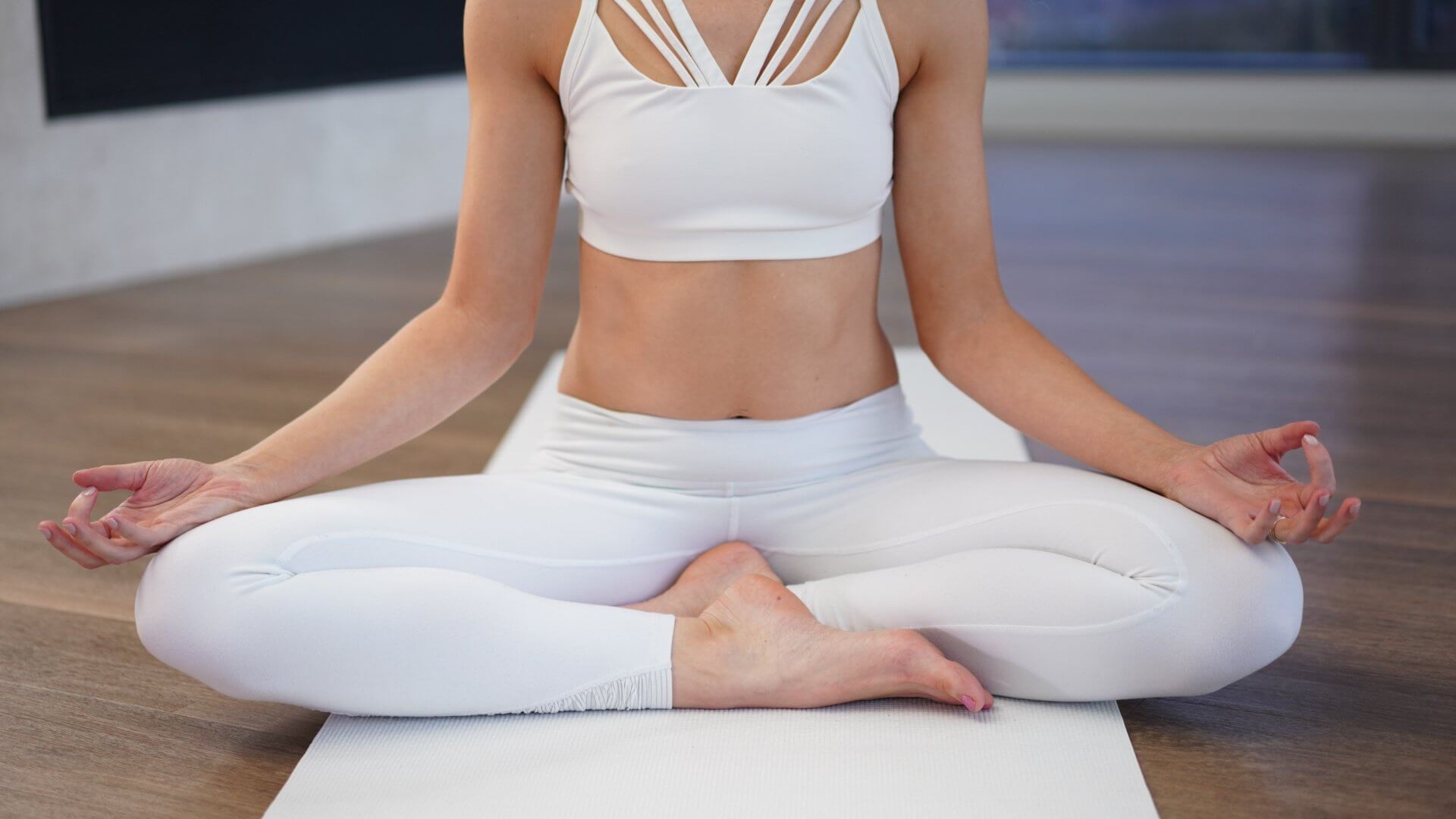
Meditation is a practice of presence that helps us to cease worrying about the past or projecting into the future and allows us to just be in the present moment.
We spend so much of our daily lives doing and going that we forget that we are human beings. Taking the time to just be, focusing our minds on the here and now through meditative practices is a powerful and effective way to reduce stress and anxiety long term as well as forge a deeper more meaningful connection with ourselves and the world around us.
There is no wrong way to meditate and there are SO many different types of meditation. Mindfulness meditation is perhaps the easiest for beginners and has a powerful impact on anxiety.
Here are some of my favorite guided mindfulness meditations:
- How To Meditate: A Complete Guide For Beginners (5-min)
- Get Grounded Meditation for Anxiety: Lower 3 Chakras Meditation (15-min)
- 20 Minute Guided Meditation For Higher Self (For Beginners)
- 10-Min Meditation and Pranayama | Easy Morning Kundalini Kriya For Stress Relief
#6 Sound Healing
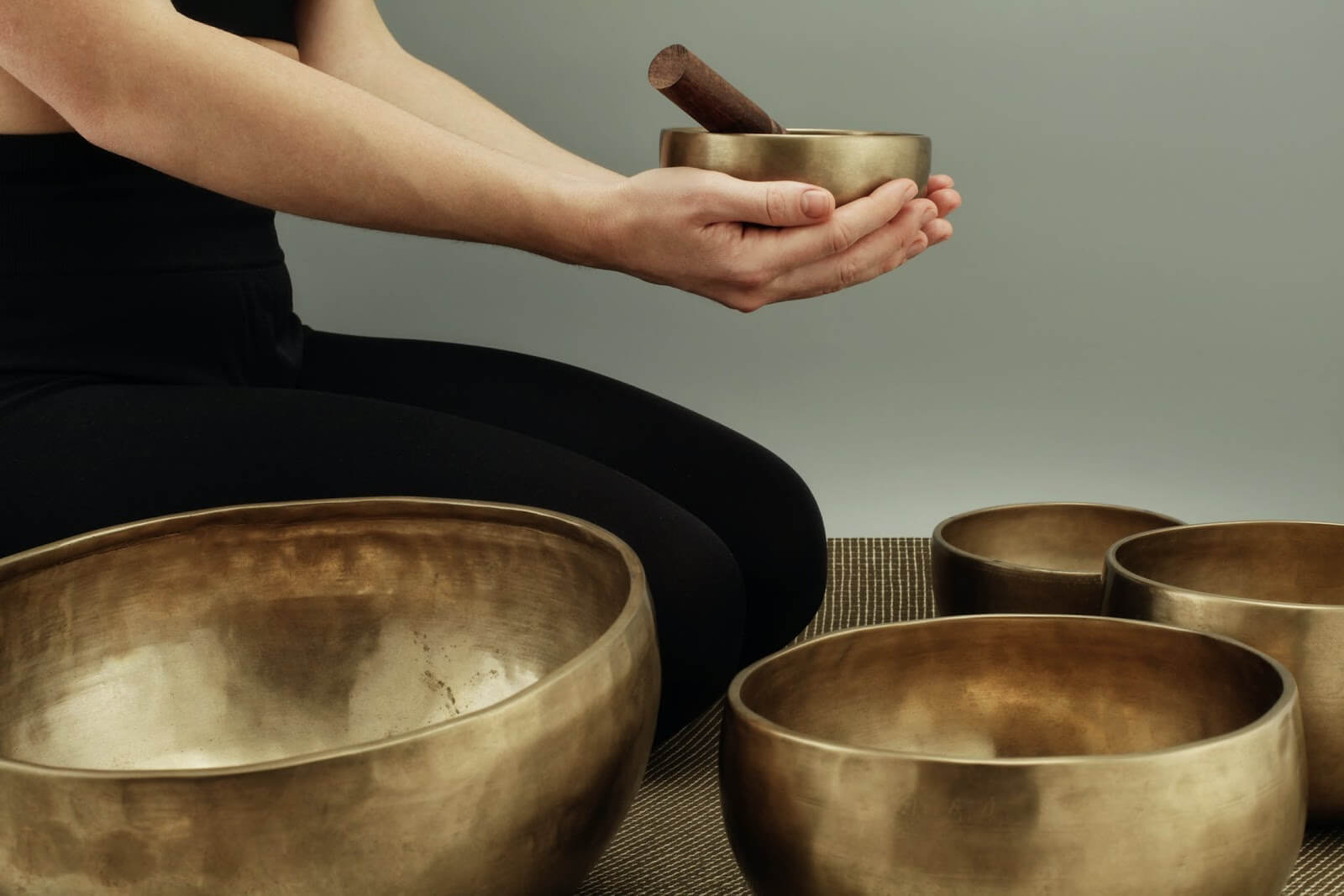
The healing qualities of sound have been used since ancient times to treat mental disorders, boost morale and increase productivity. More recently, research has shown that sound therapy reduces stress and promotes relaxation.
Singing bowls, tuning forks, pan flutes, harps and drums are all examples of instruments used in sound healing. Some yoga teachers incorporate sound healing into their asana classes where other practitioners offer dedicated sound healing classes.
There are also many recordings available that incorporate traditional instruments and frequency music that has been proven to reduce anxiety, blood pressure and lower the heart rate.
Some of my favorite sound healing sessions are:
#7 Chanting
Chanting slows the breath and triggers the relaxation response, helping us to slow down and transition from whatever we were doing into the present moment.
When we chant we vibrate and stimulate the pituitary gland, releasing endorphins that help us to release tension and feel content.
In fact, chanting ‘OM’ stimulates the vagus nerve in a similar way to deep breathing, making chanting an effective complementary treatment for acute anxiety.
In addition to the anatomical benefits of chanting, the words within the mantras that we choose have their own healing powers. They focus the mind and provide counter-narratives to anxiety-provoking self-talk or thoughts.
Start with a simple “I am…” mantra that resonates with you and repeat it either silently or out loud whenever you feel anxiety or stress creeping in. Some of my favorite mantra affirmations are
- “I am safe”
- “I am healthy”
- “I am calm”
- “I am ok”
- “I am exactly where I need to be”
- “I trust the process”
#8 Reading
Reading yogic texts and uplifting books is a wonderful way to shift your mindset to move toward happiness and away from stress and anxiety.
Yogic texts such as the Yoga Sutras and Bhagavad Gita offer teachings, practices and guidelines to live a yogic lifestyle and move through life with grace. You can read my book, Yoga Life, which teaches you how to use yoga kriyas that balance your doshas.
FREE Chakra Balancing Audio Track + Journaling Prompts
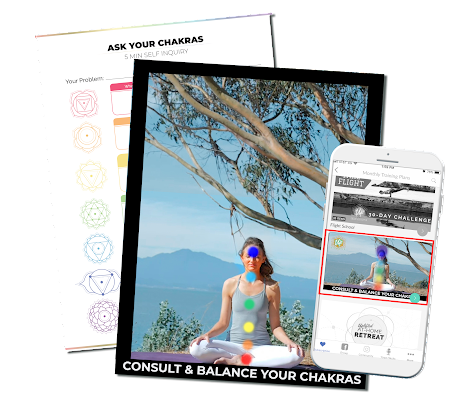
Compilations by Jack Kornfield, Thich Nhat Hanh, Pema Chodron and Sri Swami Satchidananda (to name a few) offer thoughtful perspectives on relationships, compassion and navigating the challenges of daily living.
Reading these profound thoughts and teachings helps us to realize the gift of the present moment and move away from our worries and fears.
I’ve already made a list of my favorite yoga books that you can look through to get started. I personally find Inside the Yoga Sutras by Jaganath Carrera to be like a beacon on this long, complex path of humanity.
#9 Community
Surrounding ourselves with positive people and uplifting communities helps us to remember that we are all united, we are all the same, we are all one.
Having the support and compassion of a community of like-minded people reduces social anxiety and encourages positivity and growth.
There are tons of yoga communities online that you can join, as well as your local yoga studio or social groups in your area. Members of my Uplifted community are extremely active and supportive, so I invite you to join us there 🙂
#10 Living Yoga Beyond the Mat
Bringing all that you cultivate and learn within these yoga practices beyond your mat and into your life is one of the most powerful ways to reduce anxiety and live a more present, purposeful, and peaceful life.
In fact, volunteering is known to significantly reduce depression and anxiety and is often a suggested practice for patients with a diagnosed anxiety disorder. I highly suggest taking your yoga practice well off the mat and volunteering with an organization that aligns with your own personal beliefs.
Some resources to help you find volunteering opportunities are:
- International Rescue Committee – The IRC helps settle refugees from all around the world. There are many IRC postings throughout the United States and a lot of different programs that you can work with, like resettling, business education, and English classes.
- Habitat for Humanity – Habitat for Humanity not only builds homes for people who need them, but it also has training and educational programs to uplift local communities where they are building.
- Council of Nonprofits – The Council of Nonprofits can help connect you with a charity organization in your area.
Next Steps
- If you’re interested in practical kriya yoga as a way to improve your daily life and relationships, check out my Yoga for Self Mastery course.
- Order my Yoga Life book for a practical guide to creating balance in your life through yoga.
- Check out my YouTube channel and find some yoga classes that you can try out for yourself!
FREE Chakra Balancing Audio Track + Journaling Prompts

Find more yoga sequences by benefit.
YOU MIGHT ALSO LIKE
- How to Teach Somatic Yoga: A Practical Guide for Instructors
- The Best Somatic Exercises for Grief: Find Healing Through Movement
- The Best Somatic Exercises for Anger Management and Emotional Release
- Authentic Pathways: Connecting With Higher Self for Inner Peace
- Yoga to Reconnect with Yourself: 5 Essential Practices for Inner Peace
- Yoga for Connection: 10 Poses to Deepen Relationships and Bonding
- Yoga To Connect With Your Body For Mind-Body Harmony
- Yoga to Connect with Feminine Energy: 5 Transformative Practices
- Yoga to Connect with Your Heart: 3 Poses for Emotional Balance
- Myofascial Release Yoga: Unlock Tension and Improve Flexibility
- 6 Hip Openers For Emotional Release
- Office Yoga: 10 Poses You Can Do Right Now
- Ayurveda Food Combining: The Key to Balanced Digestion
- Yoga For Grief: 8 Yoga Poses For Support
- Yoga for Vata Dosha: Practice Poses and Tips
Learn how to do 11 of the most popular yoga poses correctly. Free video + PDF download.


